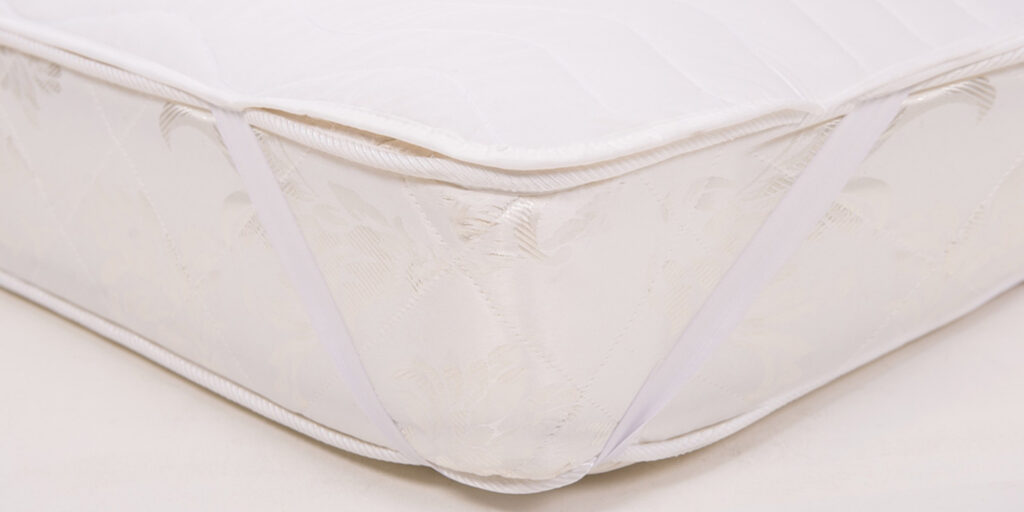Do you have a mattress protector on your bed and don’t know how to wash it? Well, don’t worry! In this article, we’ll provide you with a comprehensive guide on how to wash mattress protector and keep your bed fresh and clean. We’ll give you detailed instructions on how to properly clean and care for your mattress protector, so you can enjoy a good night’s sleep.
What is a Mattress Protector?
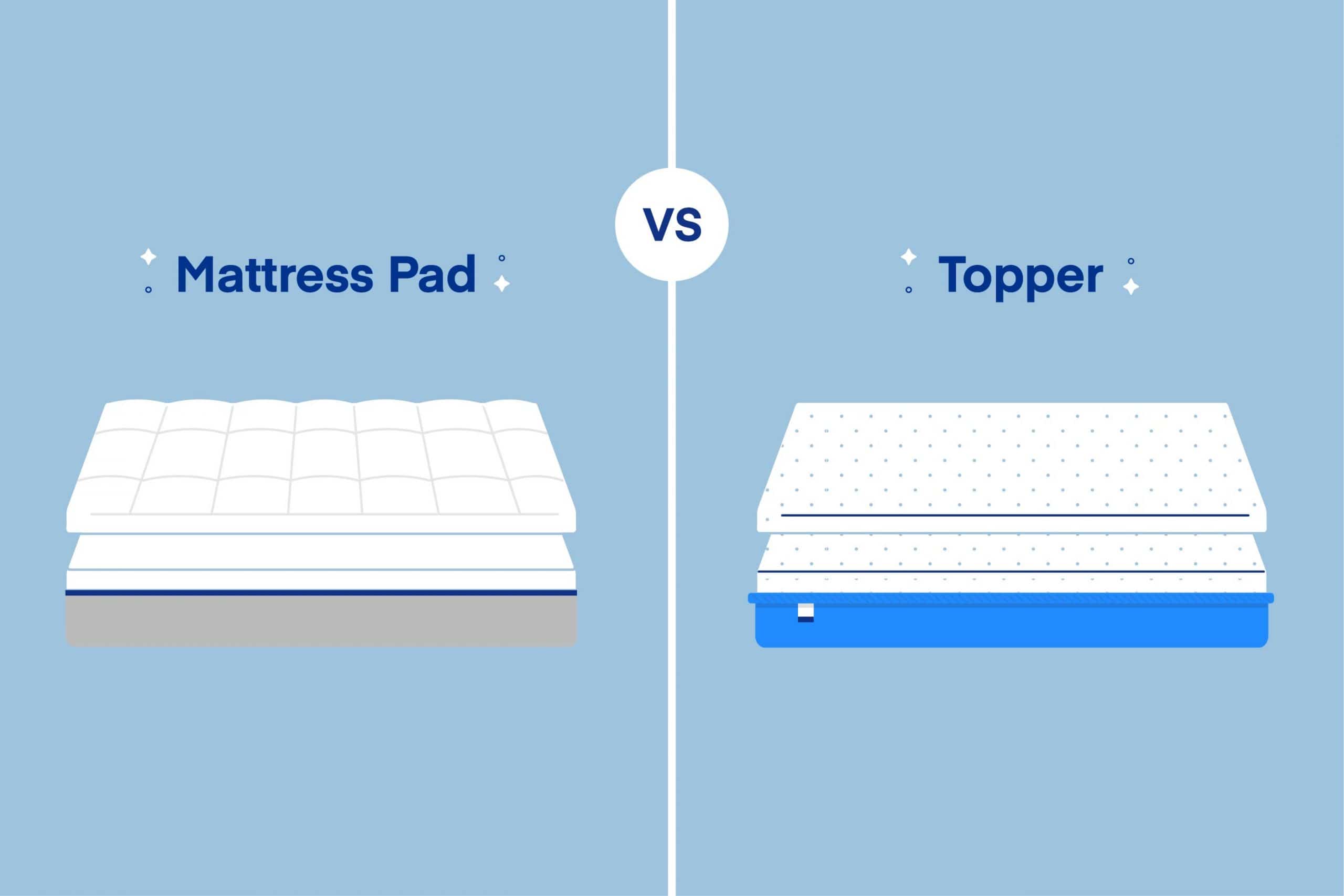
A mattress protector is a fitted sheet-like cover designed to protect your mattress from dust, dirt, stains and other external factors. It is usually made of water-resistant, breathable materials such as cotton, polyester, or vinyl. It is available in a variety of sizes and shapes to fit any mattress.
Interesting Facts About Mattress Protectors:
- Protection: A mattress protector shields the mattress from spills, dirt and dust, keeping it clean and hygienic. It also helps to protect against dust mites, allergens, and other irritants, making it ideal for allergy sufferers.
- Comfort: A mattress protector adds a layer of cushioning to the mattress, which can help improve comfort and support. It also helps to maintain the mattress’s shape and prevent sagging.
- Durability: Mattress protectors are designed to be durable and long-lasting. They are also easy to clean and maintain, making them ideal for busy households.
- Eco-friendly: Most mattress protectors are made from eco-friendly materials, such as organic cotton or bamboo. This makes them a great choice for those looking to reduce their environmental footprint.
How Often to Wash Mattress Protector?
It is recommended to launder your mattress protector at least every three months, or more often if needed. This will help to keep your mattress clean, hygienic, and free from dust mites, allergens, and other irritants.
Benefits of Washing a Mattress Protector
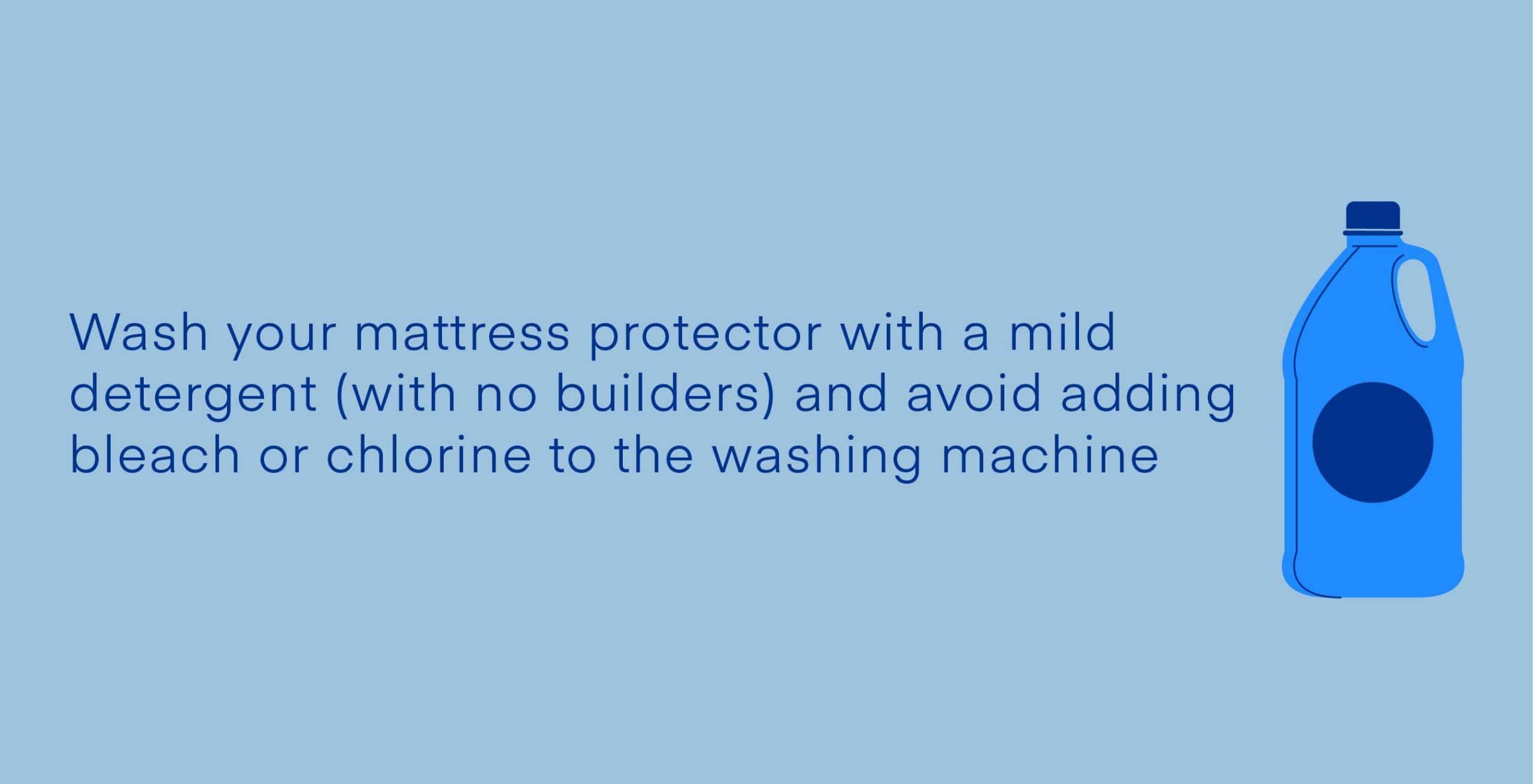
A mattress protector is a great way to keep your bed clean and hygienic. It guards against dust, dirt, and bacteria, as well as sweat, spills, and other liquids. Washing your mattress protector regularly can help to keep your bed fresh and clean, and extend its lifespan. Washing your mattress protector has a number of benefits, including:
Reducing Allergens and Dust Mites – Washing your mattress protector regularly will help to reduce allergens and dust mites that may be lurking in your bed. Dust mites and other allergens can cause irritation and discomfort, so keeping your mattress protector clean can help to reduce these issues.
Preventing Stains and Odors – When you don’t wash your mattress protector, it can be prone to staining and odors. Washing it regularly will help to prevent these problems from occurring.
Extending the Lifespan of Your Mattress – Keeping your mattress protector clean and free from dirt, dust, and bacteria will help to extend the lifespan of your mattress. This will reduce the need to replace your mattress as often.
Maintaining Hygiene and Cleanliness – Washing your mattress protector will help to ensure hygiene and cleanliness in your bed, so that you can get a comfortable and restful sleep.
Regularly washing your waterproof mattress cover is an important part of keeping your bed fresh and clean. Following the above guide will help you to ensure that your mattress protector is kept clean and hygienic.
How to Wash a Mattress Protector
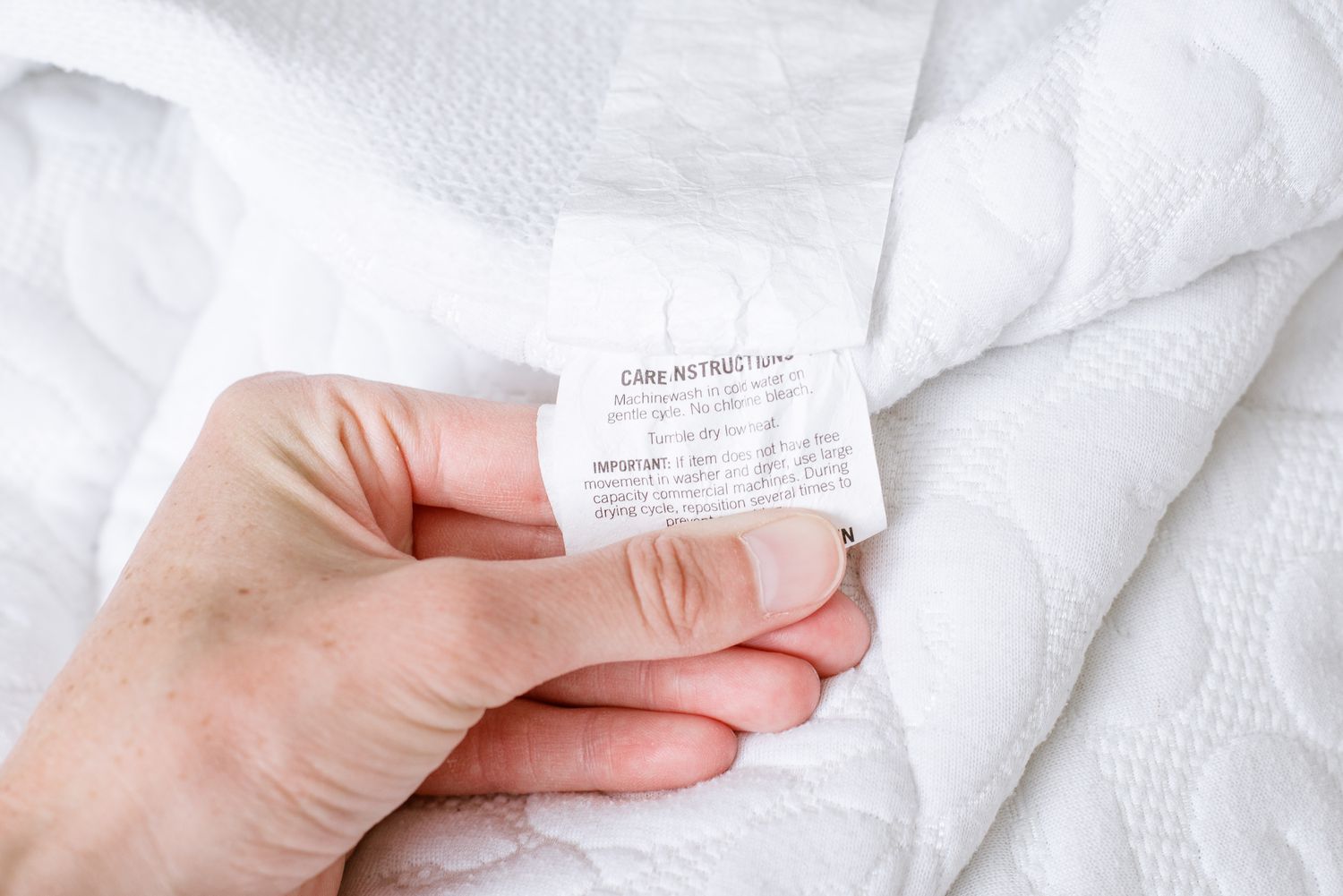
Determine the Type of Mattress Protector
Before washing a mattress protector, it is important to determine what type of material it is made from. Some protectors are made from natural fibers such as cotton, while others may be synthetic. Depending on the material, the washing instructions will vary.
Prepare the Mattress Protector for Washing
Before washing the mattress protector, it should be carefully inspected for any stains, rips, or tears. Any spots should be treated with a pre-wash stain remover. The protector should then be zipped up and securely fastened to prevent any unnecessary lint or debris from entering the washing machine.
Select the Washing Temperature
The next step is to select the washing temperature. For most mattress protectors, a warm or cold cycle is best. Hot water may cause the fabric to shrink or fade. If the protector is made from a natural fiber, a cold cycle should be used to help preserve the material.
Choose the Appropriate Detergent
When selecting a detergent for washing the mattress protector, it is important to choose one that is gentle and designed for delicate fabrics. If the protector is made from a synthetic material, a detergent designed for washing synthetic fabrics may be used.
Wash the Mattress Protector
Once all of the necessary preparations are complete, the mattress protector can be placed in the washing machine. For best results, it should be washed separately from other items. It is also important to select the lowest spin speed setting to avoid damaging the material.
Rinse and Dry the Mattress Protector
After washing, the mattress protector should be rinsed thoroughly and allowed to air dry. If the protector is made from a natural fiber, it should be line-dried to prevent shrinkage. It is recommended to replace the mattress protector every few months to ensure that it is always clean and fresh.
By following these simple steps, your mattress protector can be kept clean and free from dust and allergens. Furthermore, it is important to remember that regular washing and changing of the protector can help to extend its life and keep your bed fresh and comfortable. So, how often should you change your mattress protector? It is recommended to replace it every two to three months.
How Often Should You Wash a Mattress Protector?
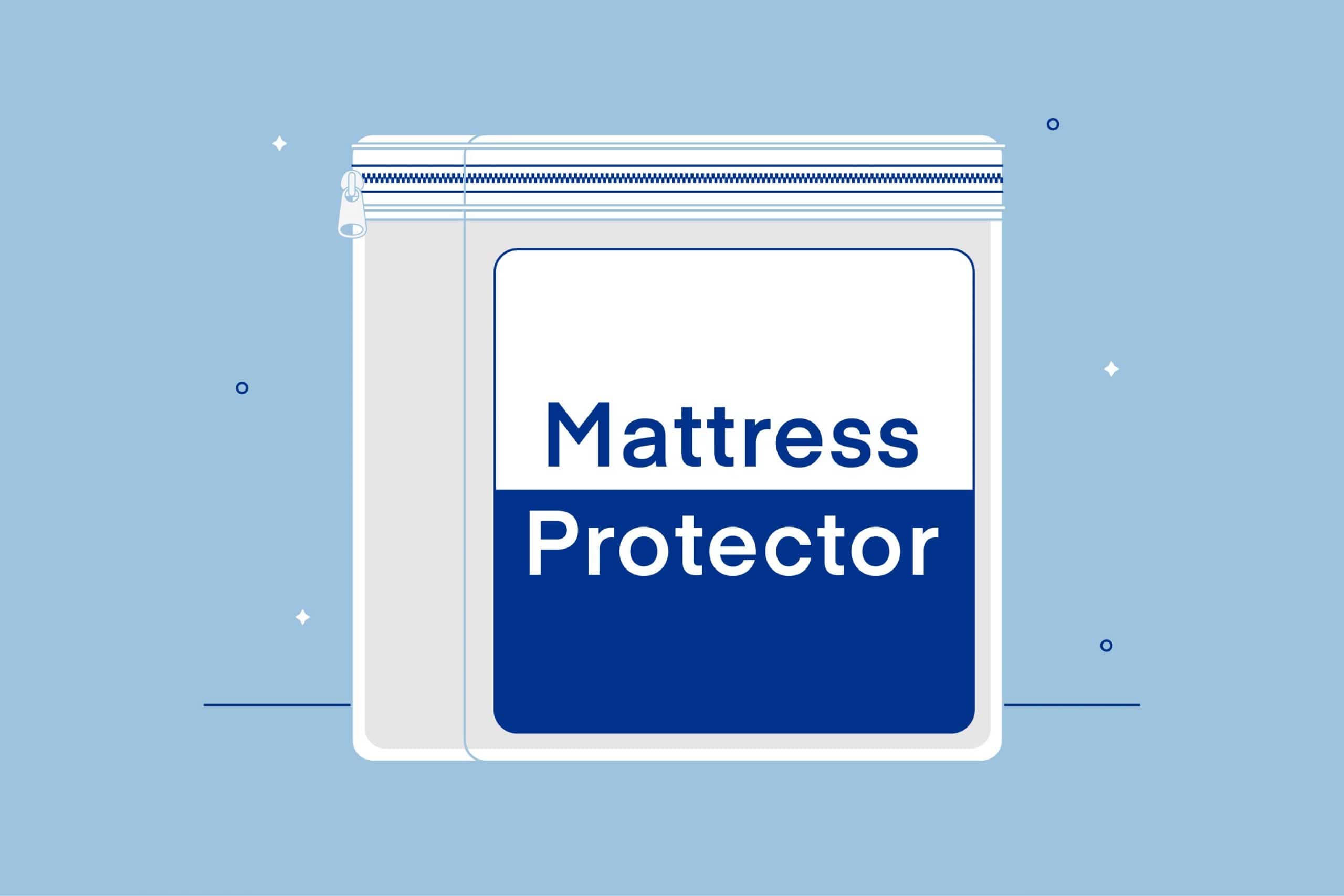
It’s important to keep your mattress protector clean in order to maintain a healthy sleep environment. Generally, you should aim to wash your mattress protector at least every three months. However, if you or your bed partner suffer from allergies or skin sensitivity, it is recommended to wash it more often.
Here are some guidelines to keep in mind when washing your mattress protector:
- Check the care label to make sure you are washing the mattress protector correctly.
- Remove any dirt or debris from the surface of the protector before washing it.
- Wash the protector in warm water using mild detergent.
- Avoid using bleach or other harsh chemicals as they can damage the fabric.
- Hang the protector to dry or tumble dry on a low setting.
- Do not dry clean or iron your mattress protector.
When it comes to drying a mattress protector, you should always hang it up to dry, as this will help prevent it from shrinking or becoming misshapen. If you’re in a hurry, you can also tumble dry it on a low setting. Just make sure to keep an eye on it, as it may take longer to dry than you expect.
How to Wash Waterproof Mattress Cover
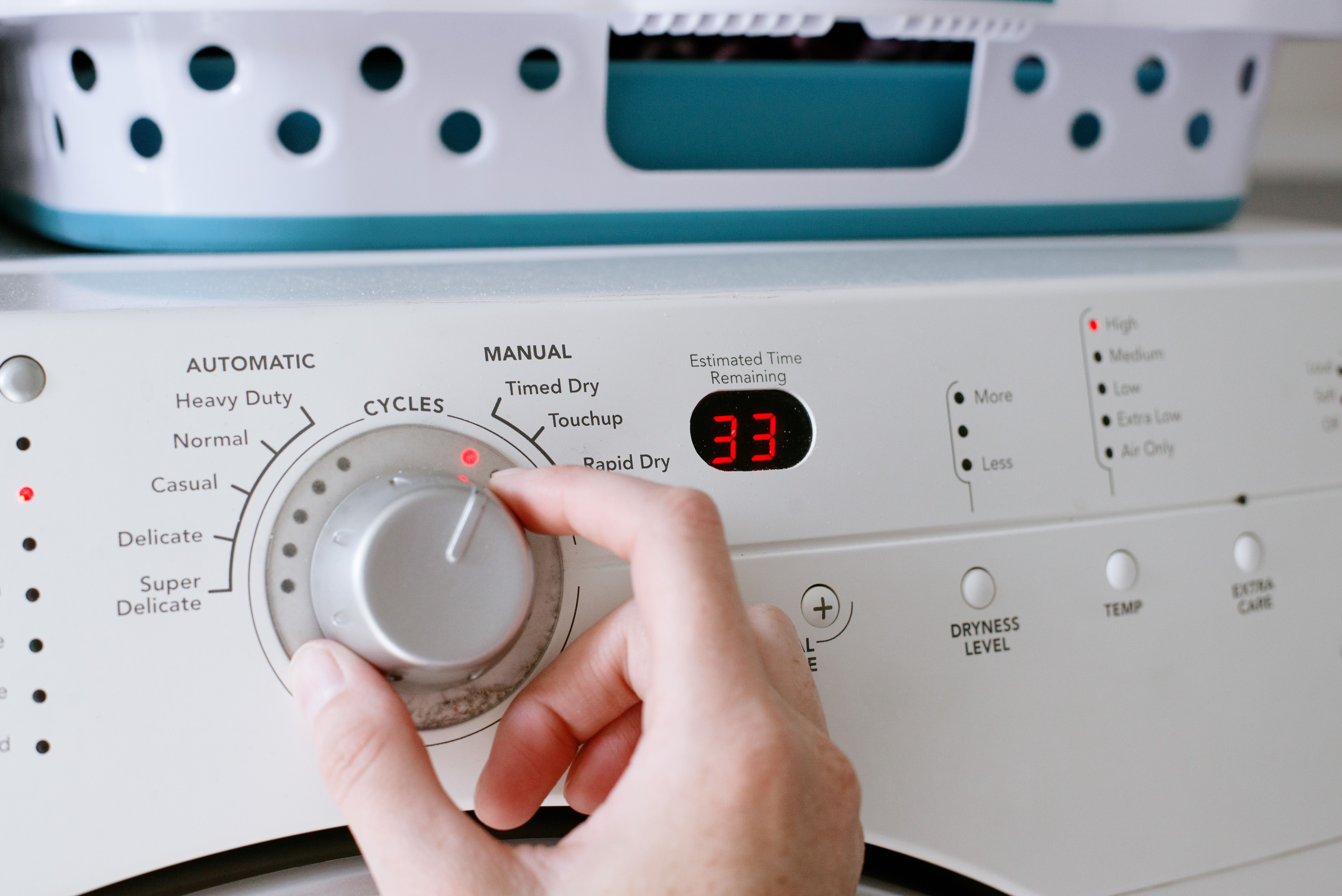
1. Check the Care Label: Before you start washing the mattress protector, always check the care label for instructions. As each mattress protector may have different cleaning instructions, make sure to read the care instructions before beginning.
2. Pre-Treat Stains: If there are any tough stains, pretreat them with a gentle detergent or a store-bought stain remover.
3. Machine Wash: Most mattress protectors are machine-washable, however, make sure to check the care label for the correct settings. Warm water settings are usually recommended for washing mattress protectors, but make sure to check the care label for the best temperature settings.
4. Wash with Gentle Detergent: Use a mild detergent that is free of harsh chemicals and fragrances. Make sure to use a detergent that is specifically designed for washing waterproof mattress covers.
5. Rinse and Dry: After the wash cycle is complete, it is important to make sure the mattress protector is rinsed properly and that all of the detergent is removed. Once the mattress protector is rinsed, dry it on a low heat setting in the dryer.
6. Store Properly: Once the mattress protector is completely dry it is important to store it properly. Make sure to store the mattress protector in a cool, dry place. This will help to ensure that the waterproofing properties of the mattress protector remain intact.
How Often Should You Change Mattress Protector?
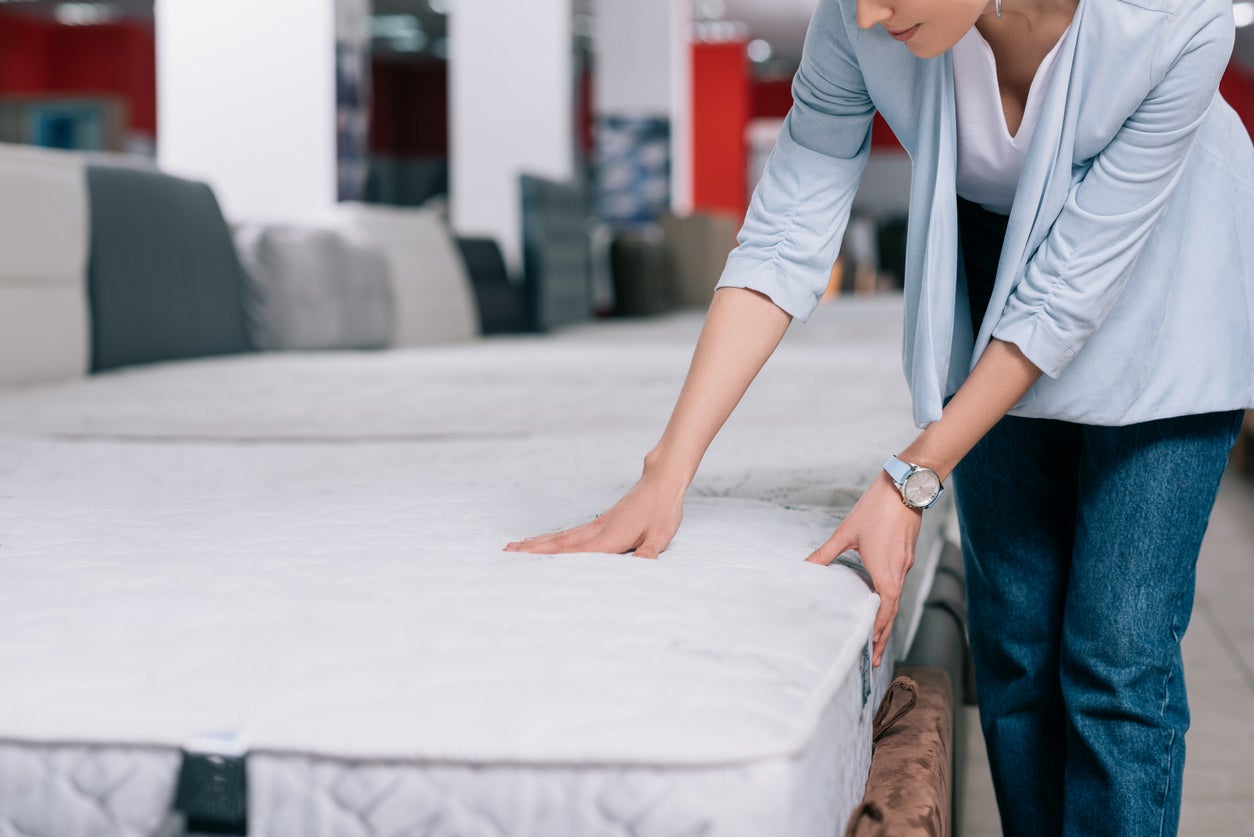
It is recommended that you change your mattress protector every 3-6 months, depending on how often you use it. If you use it daily, you may need to change it more often. Here are some tips to help you determine how often to change your mattress protector:
- Check for wear and tear – Look closely at your mattress protector for any signs of wear and tear such as rips, tears, or discoloration. If you notice any of these, it may be time to replace your mattress protector.
- Check for dirt and stains – Inspect your mattress protector for any dirt or stains that have accumulated over time. If you see any, it may be time to replace your mattress protector.
- Check the manufacturer’s instructions – Some mattress protectors have specific care instructions from the manufacturer. If your mattress protector has any, be sure to follow them to ensure proper care and a longer life for your mattress protector.
By regularly checking your mattress protector for wear and tear, dirt and stains, and following the manufacturer’s instructions, you can ensure your mattress protector is kept clean and fresh for a longer period of time.
How to Dry a Mattress Protector
Once the mattress protector is clean, it is important to dry it properly. The best way to dry a mattress protector is to hang it up, or lay it flat on a clothesline or drying rack in a well-ventilated area. It is important to avoid direct sunlight, as this can cause the protector to fade or become discolored. If drying outside, it is best to check the weather and avoid hanging in windy or rainy conditions.
For best results, it is best to set the dryer on a low heat setting, as higher temperatures can damage the mattress protector. If using a tumble dryer, it is important to check the manufacturer’s instructions. Additionally, a few tennis balls can be added to the dryer to help the mattress protector keep its shape. Once the mattress protector is dry, it can be put back on the mattress.
If the mattress protector is not completely dry after being hung up or placed in the dryer, it can be dried using a hairdryer on a low heat setting. This is a good option for those living in humid climates or who don’t have access to a clothesline or drying rack.
Frequently Asked Questions
What Type of Detergent Should I Use to Wash My Mattress Protector?
When washing a mattress protector, it is important to use the right type of detergent. The best detergents for mattress protectors are:
- Free from enzymes and bleach: Look for detergents that are free from enzymes and bleach, as these can damage the fabric of the mattress protector.
- Non-abrasive: Choose a non-abrasive detergent, as harsh chemicals can damage the fabric and cause it to break down over time.
- Gentle on fabric: Choose a detergent that is gentle on fabric, as harsh chemicals can damage the fabric and cause it to break down over time.
- Hypoallergenic: Choose a hypoallergenic detergent, as this will prevent any allergic reactions.
Additionally, it is important to read the cleaning instructions on the care label of the mattress protector before using any detergent to ensure that the fabric will not be damaged.
How Often Should I Wash My Mattress Protector?
It depends on the type of mattress protector you have:
- For non-washable mattress protectors, replace every one to two years.
- For washable mattress protectors, wash every three months on a gentle cycle.
Additional Tips:
- If your mattress protector is made of natural fibers like cotton, consider washing more often.
- If you have pets, consider washing more often.
- If you experience any allergies or sensitivities, consider washing more often.
How do I know when my mattress protector is clean?
Once the mattress protector has been washed and dried, inspect it for any remaining dirt or stains. If everything looks clean and fresh, you can put it back on your mattress. If there are still visible signs of dirt or stains, you may need to repeat the washing process. Additionally, you can smell the mattress protector to determine if it is clean. If the smell is still strong, you will need to wash it again.
Is it Safe to Machine Wash My Mattress Protector?
Yes, it is safe to machine wash your mattress protector. However, it is important to read the care instructions on the mattress protector’s label before washing. Some mattress protectors can be machine washed in cold water on a gentle cycle, while others may require hand washing. After washing, tumble dry on low heat or air dry.
Is it necessary to use a dryer to dry my mattress protector after washing?
No. It is not necessary to use a dryer to dry your mattress protector after washing. You can simply hang your mattress protector out to air dry. To ensure the best results, you should:
- Hang your mattress protector on a clothes line or other line for drying.
- Ensure that the mattress protector is completely dry before putting it on the bed.
- Avoid direct sunlight when drying your mattress protector.
- Turn the mattress protector inside out to make sure it is completely dry.
If you have a large mattress protector, you can use a fan to speed up the drying process. However, you should avoid using a dryer as it can cause shrinkage and damage to the fabric.
Conclusion
Mattress protectors provide an extra layer of protection against allergens, dust, and sweat from getting into your mattress, ultimately extending its lifespan. Washing your mattress protector regularly will help you keep your bed clean and fresh. With the right detergent and a washing machine, it is easy to keep your protector in great condition.
